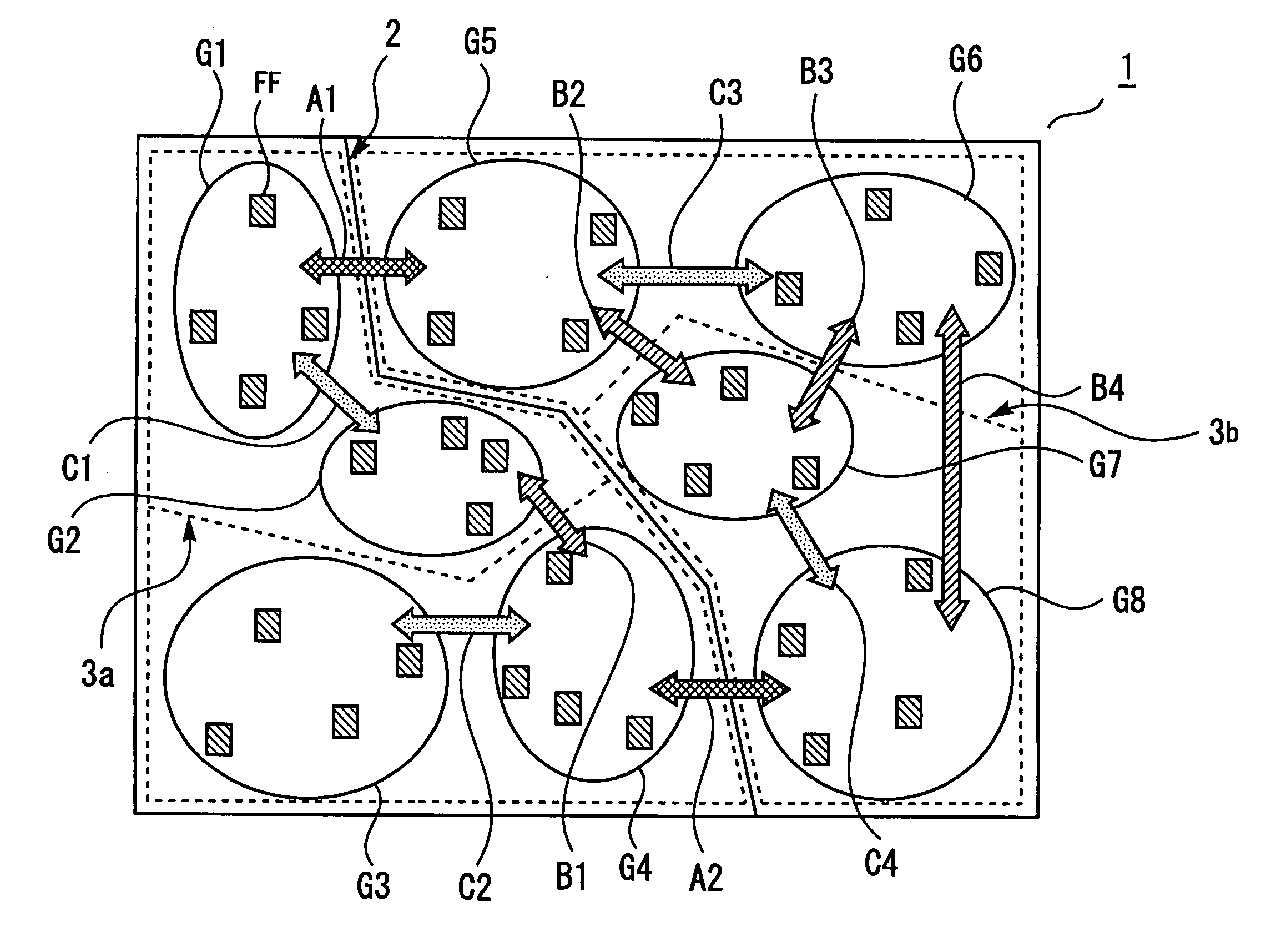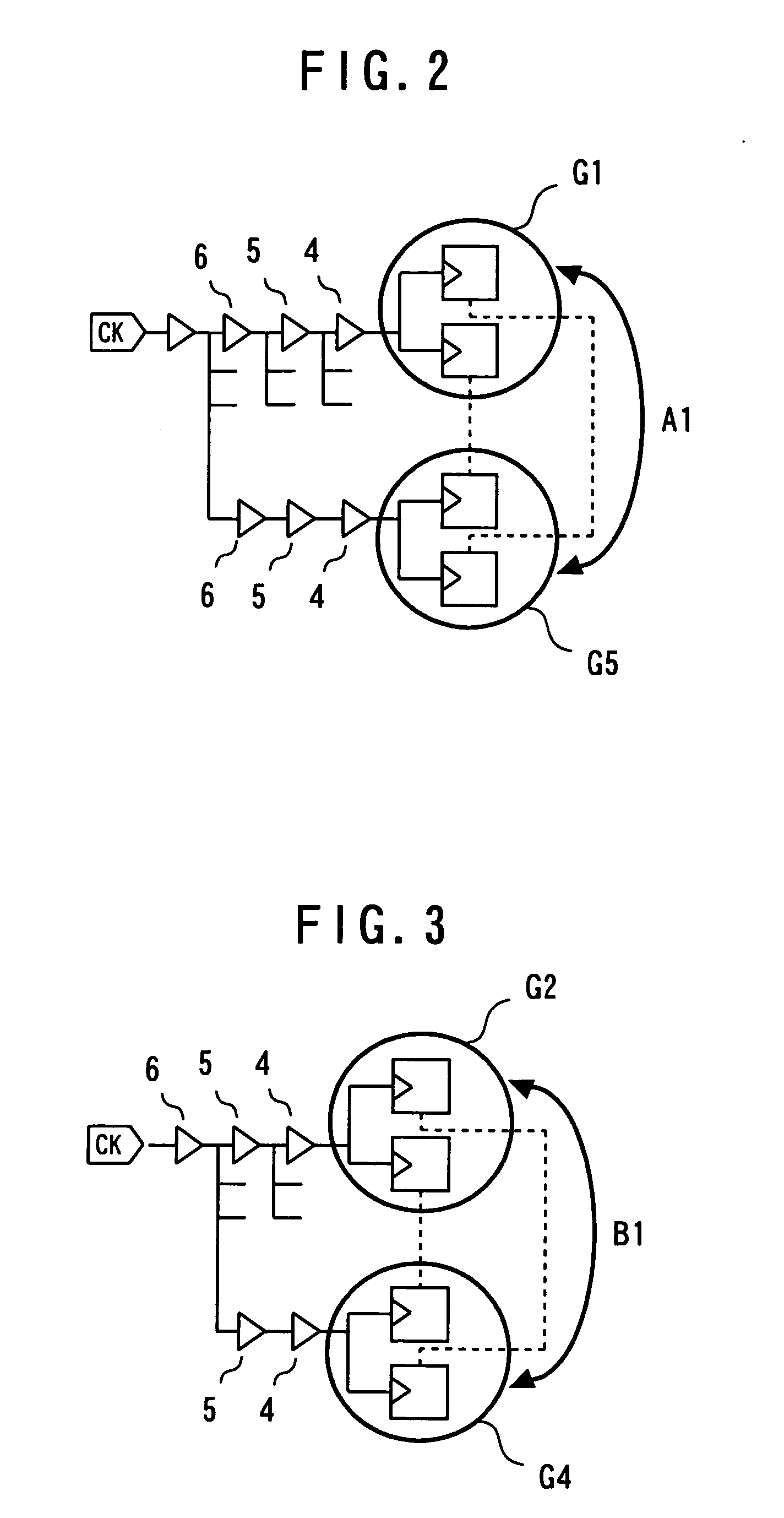Clock forming method for semiconductor integrated circuit and program product for the method
a technology of integrated circuits and clocks, which is applied in the direction of pulse techniques, generating/distributing signals, instruments, etc., can solve the problems of clock skew increase on an actual device, difficulty in accurately and correctly supplying clocks to all sequential, etc., and achieve the effect of improving the on-chip variability resistan
- Summary
- Abstract
- Description
- Claims
- Application Information
AI Technical Summary
Benefits of technology
Problems solved by technology
Method used
Image
Examples
first embodiment
[0025] A clock forming method for a semiconductor integrated circuit according to the first embodiment of the present invention will be described. The clock forming method described below is a method of performing clock tree synthesis (hereinafter referred to as “CTS”) after dividing a circuit region (grouping).
[0026] A method of dividing a circuit region into groups of regions will first be described. As shown in FIG. 1, a multiplicity of flip-flops (hereinafter referred to “FF”) exit in a circuit region 1. As a standard method of dividing into groups regions, a method of grouping FFs into groups of equal numbers of FFs or a method of dividing an area into equal parts may be used. An example of grouping by dividing a region into equal parts for equal number of FFs will be described below.
[0027] As shown in FIG. 1, each of regions G1 to G8 contains four FFs. Connection channels for data transfer between certain regions (hereinafter referred to as “data connection channel”) exist b...
second embodiment
[0038] A clock forming method for a semiconductor integrated circuit according to the second embodiment of the present invention will be described. The second embodiment will be described with respect to points of difference from the first embodiment. In the above-described grouping method in the first embodiment, grouping is performed so that the number of data connection channels intersected by a boundary is minimized. With respect to grouping by this method, dividing into a group of regions G1 to G4 and a group of regions G5 to G8 as shown in FIG. 4 is conceivable.
[0039] In this case, the number of data connection channels intersected by the boundary 2 is two, the minimum number. However, the regions G5 to G8 extend largely along the periphery of the circuit region 1. Therefore, if CTS is executed in the state shown in FIG. 4, the clock delay is increased. An increase in clock delay leads to a reduction in on-chip-variation resistance. For this reason, dividing such as described...
PUM
 Login to View More
Login to View More Abstract
Description
Claims
Application Information
 Login to View More
Login to View More - R&D
- Intellectual Property
- Life Sciences
- Materials
- Tech Scout
- Unparalleled Data Quality
- Higher Quality Content
- 60% Fewer Hallucinations
Browse by: Latest US Patents, China's latest patents, Technical Efficacy Thesaurus, Application Domain, Technology Topic, Popular Technical Reports.
© 2025 PatSnap. All rights reserved.Legal|Privacy policy|Modern Slavery Act Transparency Statement|Sitemap|About US| Contact US: help@patsnap.com



